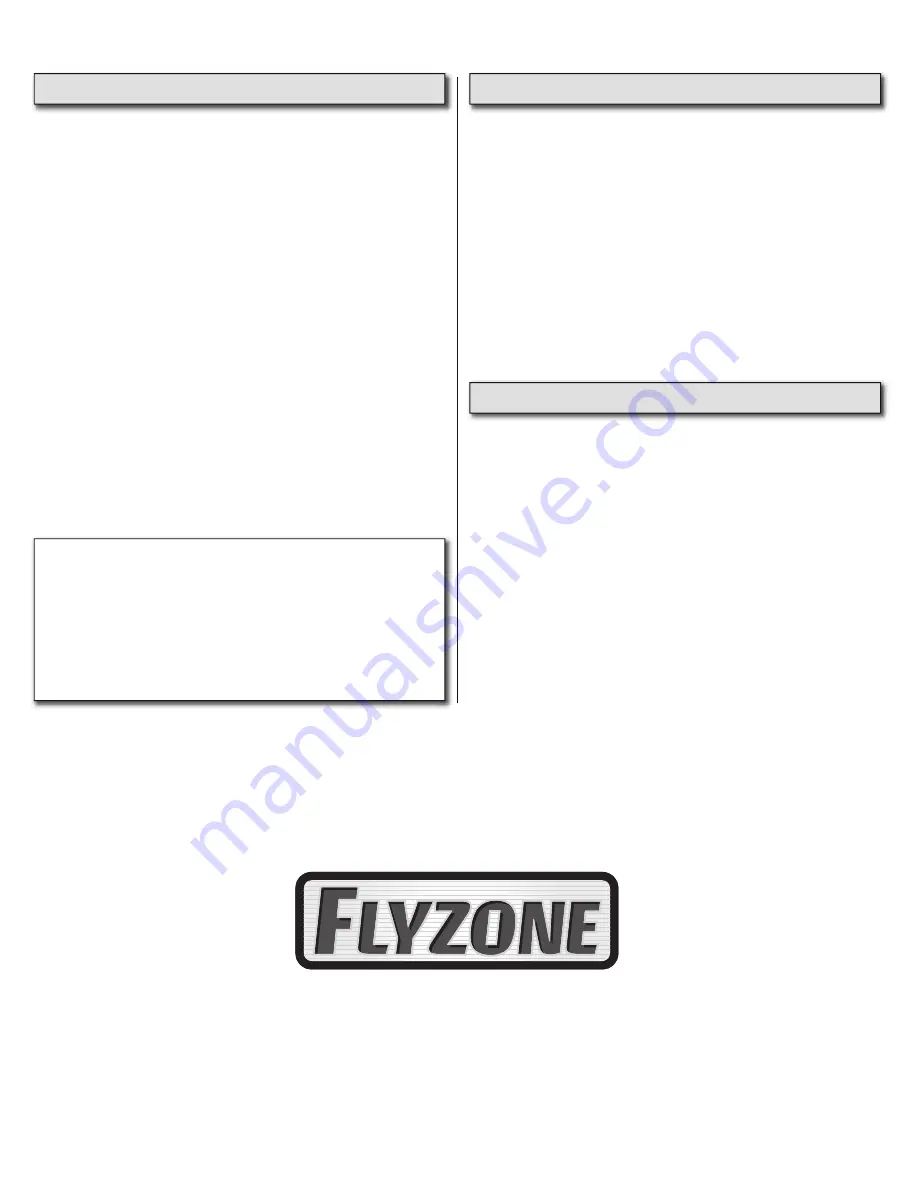
LANDING
1. For your fi rst couple of fl ights we recommend that
you attempt to land well before the motor stops.
2. During your fi rst fl ight, while at a high altitude,
turn the motor off and notice how the airplane
reacts. This will give you an idea of how the
airplane will react during a landing.
3. To land, fl y down wind, past the landing area.
Gently turn into the wind and reduce the throttle
so that the airplane starts to come down. Adjust
the throttle as needed to reach the landing area,
but not fl y past it.
4. Just before landing, at about 1 foot above the
ground, apply a little up elevator to fl are (raise the
nose of the airplane). This will cause the airplane
to slow and settle to the ground.
CAUTION:
If, during a rough landing, the
propeller should become jammed and cannot
rotate with the throttle in the run position, the
battery and speed control will become very hot.
Immediately move the throttle lever to the left
to stop the motor. If you fail to do this, the motor,
speed control and/or battery will be damaged.
AFTER THE FLIGHT
Disconnect the battery from the airplane. Then,
switch the transmitter off and remove the battery
from the battery compartment of the airplane.
Allow the motor and battery to cool before
recharging. Check the airplane over to make sure
nothing has come loose or may be damaged.
REPAIRS
Even the best R/C pilots in the world damage their
airplanes every now and then. In the unfortunate
event that you damage your airplane, repairs are
fairly simple to make yourself. If there are any
cracks in the wing or fuselage, apply 6-minute
epoxy or white glue to the broken areas and hold
together with clear packaging tape. Let the glue
cure, leaving the tape in place for added strength.
14


































